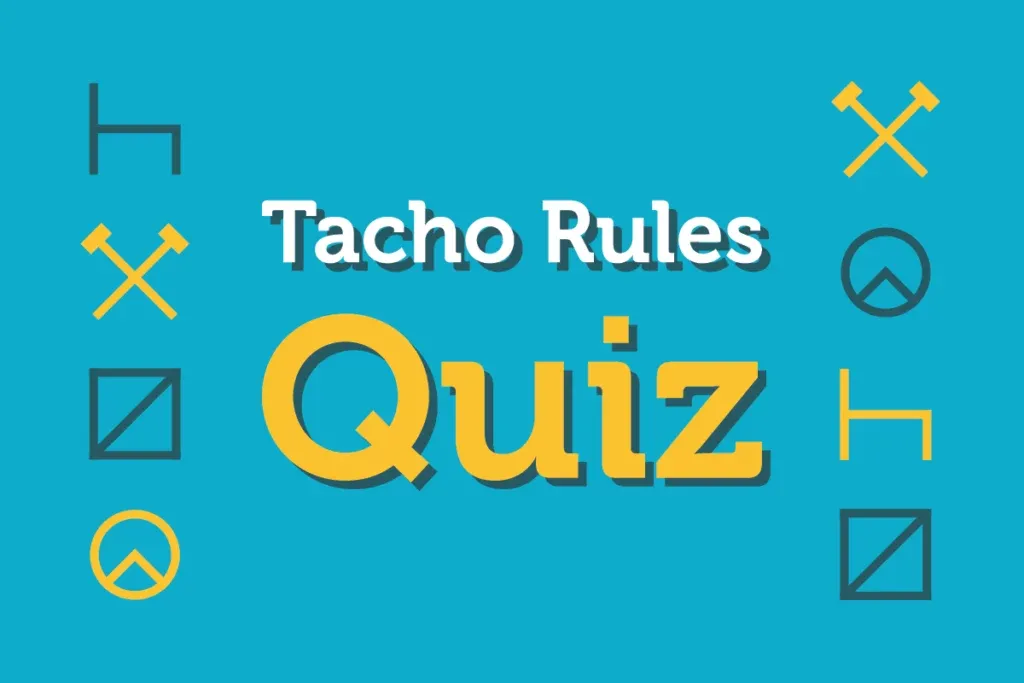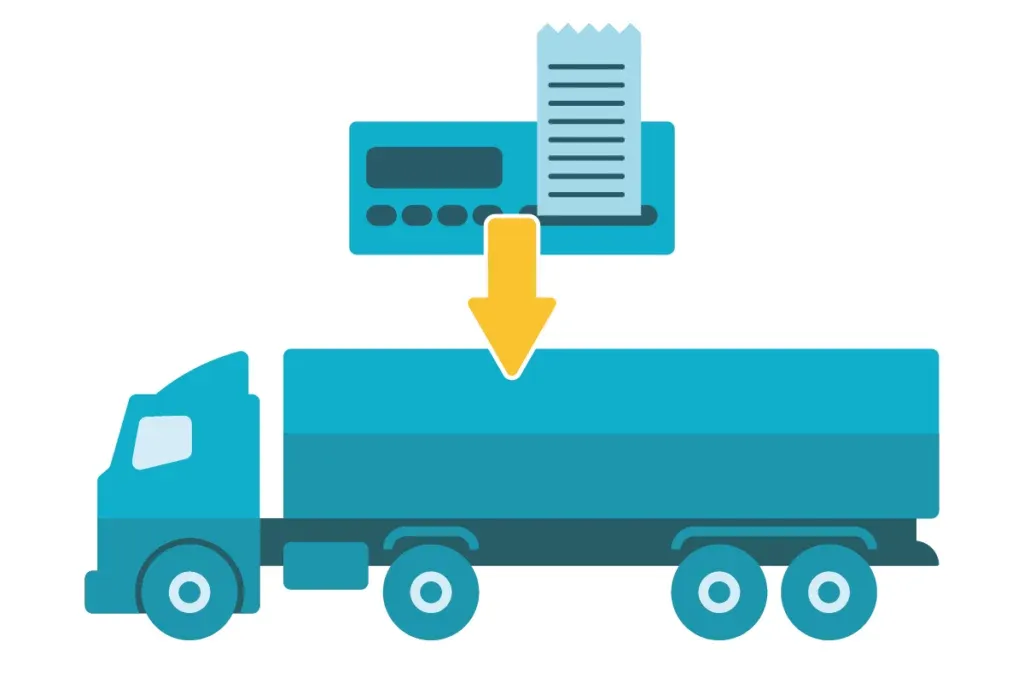The tachograph duty comes from the European obligation to register the driving and rest times of professional drivers. All vehicles and vehicle combinations with a total weight of more than 3,500 kg are obliged to have a tachograph.
Tacho Rules Quiz
Do you think you know all the rules regarding driving and rest times? Test your knowledge with our Tacho Rules Quiz!
Take the FleetGO Tacho Quiz
Tachograph obligation: trucks, delivery vans
All vehicles and vehicle combinations with a total weight of more than 3,500 kg are obliged to have a tachograph. There are exemptions to the tachograph obligation. These may differ according to the country.

The tachograph obligation also applies to delivery vehicles over 3,500 kg and delivery vehicles with trailers. It is especially the latter that causes problems in practice. It is important to know that it is not the actual weight, but the maximum authorised mass (mam) that matters. This information can be found on the registration certificate and on the type approval of the trailer.
Example: A Ford Transit has a maximum authorised mass of 2,800 kg. When this vehicle drives without a trailer, there is no tachograph obligation. But when a trailer with a maximum authorised mass of 750 kg is attached, the total combination exceeds the limit of 3,500 kg and a tachograph obligation does apply.
Never risk any tachograph fines again!
Get started with analysing your tachograph files with the FleetGO all-in-one tacho solution. Never miss an infringement again!
Chances of getting invested are higher than ever!

What is the tachograph obligation?
The tachograph obligation concerns the registration of the driving and rest times of professional drivers. The aim is to improve working conditions and thereby improve traffic safety. In addition, it also ensures fairer competitive relationships in the European transport sector.
Regulatory legislation has been harmonized in Europe. This means that an inspection must give the same results in all Member States. Regular consultation must lead to a clear interpretation of the guidelines that the inspection bodies can use during the enforcement of the rules.
All Member States must carry out a minimum number of inspections, including both road inspections and company inspections. Every two years this should be reported to the European Commission so that the Member States can assess each other as to whether there have been sufficient checks. This should also contribute to fairer competitive relationships.
Automatic Download & Analysis
FleetGO has developed a unique all-in-one solution to automatically download and analyse all tachograph files. These are both from mass memory and driver passes.
Exemption from the tachograph obligation
There are a number of exemptions whereby not every truck driver has to use a tachograph. The exemptions are subdivided into national and international exemptions. If you meet one of the conditions, the tachograph obligation does not apply to you. You do not need to request an exemption, but you must be able to demonstrate during a check that you meet the condition(s).
Other obligations regarding the tachograph
If you are obliged to use a tachograph, then there is an additional important obligation. You must read and archive all tachograph data periodically and check it for possible violations.
You must read the data from the tachograph itself, the mass memory, at least once every 90 days. The data stored on the driver card must be read at least once every 28 days.
How long to keep digital tachograph records
You must then analyse this data to check that no violations have been committed. If violations have been committed, as an employer you must point them out to your employee (the driver in question). You must keep this complete file for at least one year.
Note: you may have to keep the data for longer for your tax administration. For example, if you use the tachograph data for remuneration, the tachograph data falls under the tax retention obligation of 7 years!
Summary:
- Read mass memory at least every 90 days
- Read driver card at least every 28 days
- Check for violations and inform the driver accordingly
- Keep the complete file/archive for at least one year
Do you want to know more about automating this entire process? Then read more about the remote download solution with built-in analysis tool from FleetGO.
Manual entry for other activities
From 2 March 2015, every driver must manually enter their activities that are not registered by the tachograph. This therefore requires 24-hour accountability. In most cases this means that the daily and weekly rest times must be added manually. The activities that can be added manually are rest, work (paid work) and availability time (e.g. for double-manned journeys).
Tachograph fines
The fines for violations of tachograph legislation are substantial and range from €100 to €4,400 per violation depending on the country. Read more about all tachograph fines.
Tachograph obligation with rented vehicles
If, for whatever reason, a vehicle that falls under the tachograph obligation is rented, then it is important that this data is also recorded and archived correctly. The renter must ensure that the tachograph of the rented vehicle is linked to the company card of the company renting the vehicle. This is the so-called ‘lock-in’ function of the tachograph. This is the only way to correctly register and download the required data from the tachograph. Remember to disconnect the company when the vehicle is returned (‘lock out’).
Disclaimer
This content is provided for informational purposes only and is not meant to be an endorsement or representation by FleetGO.com or any other party. This information may contain inaccuracies or typographical errors, despite our efforts to ensure accuracy. FleetGO.com accepts no responsibility or liability for any errors or omissions, and is not responsible for the contents of any linked website or any link contained in a linked website. Please refer to our full disclaimer for more details.


